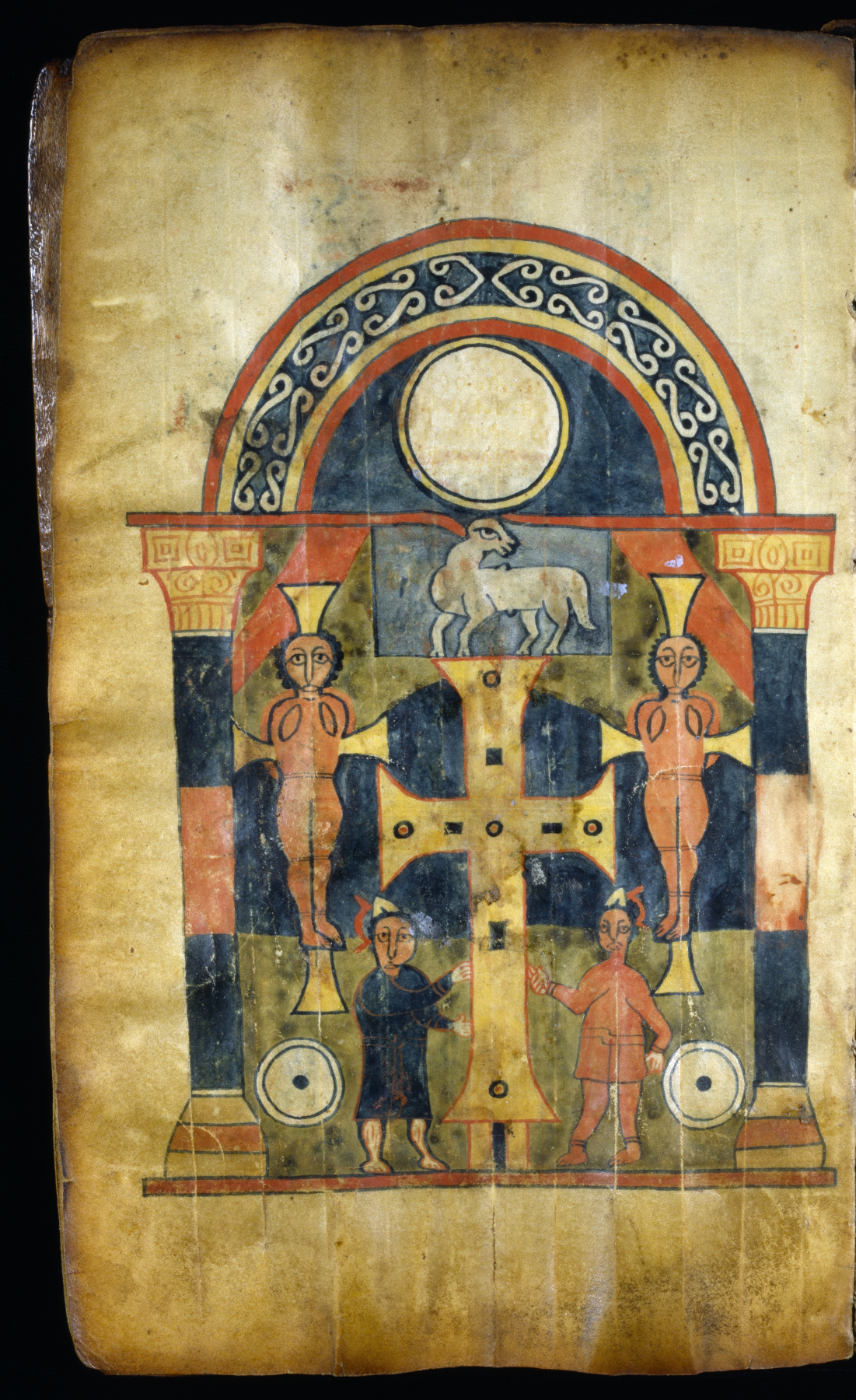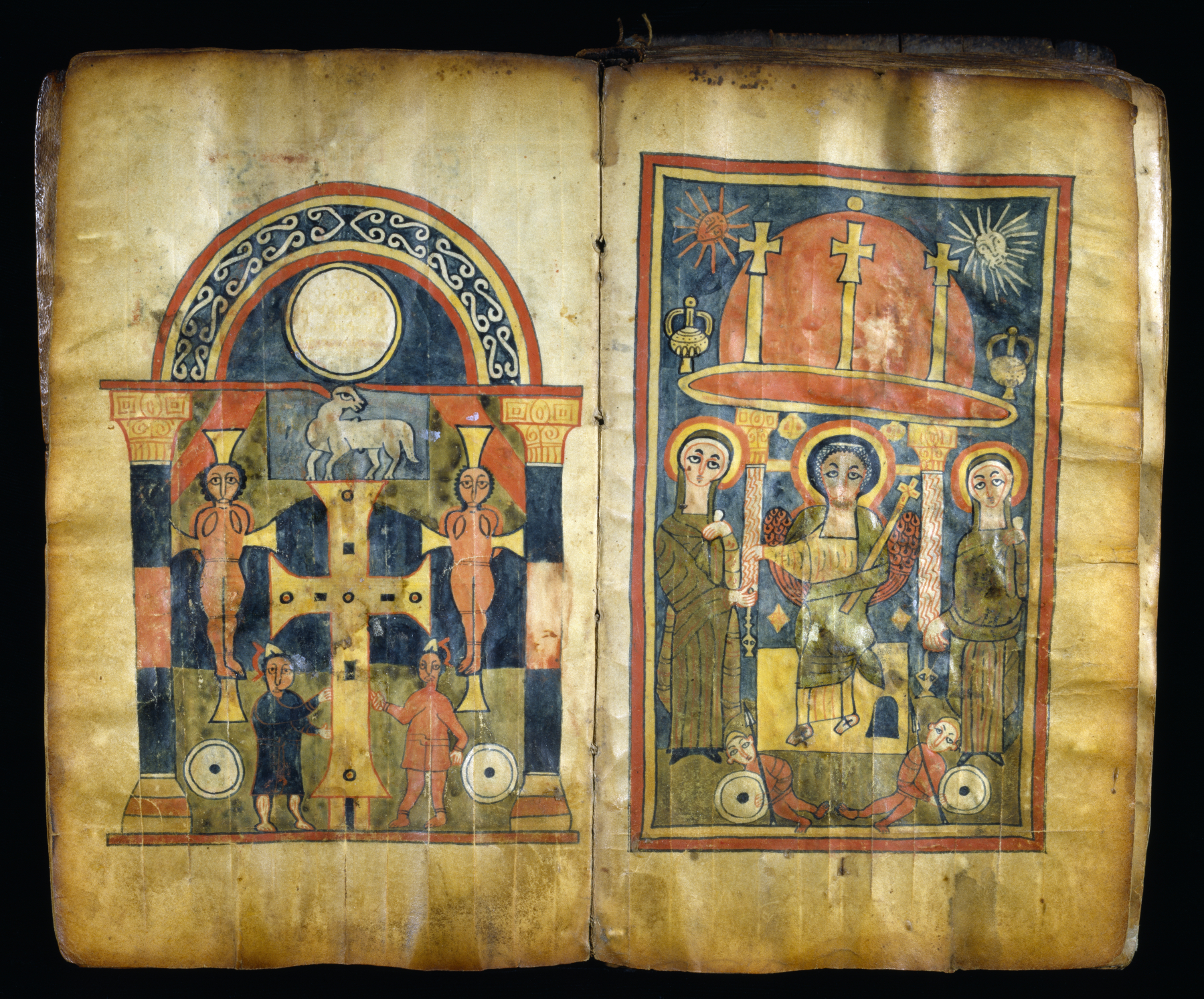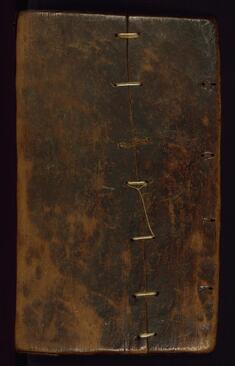Leaf from Ethiopian Gospels: the Crucifixion, with Christ Represented as Lamb on Top of the Cross
This Gospel book belongs to a group of manuscripts produced at a monastery in northern Ethiopia during the fourteenth century. All the surviving books in this group contain frontispieces featuring scenes of the Crucifixion, the Holy Women at the Tomb, and the Ascension. The arrangement of miniatures ensured that the Crucifixion (this folio) and the Holy Women at the Tomb (fol. 7r) occupied facing pages. Close examination of the miniatures reveals that each picture was composed with the help of a specifically designed grid, with the vertical lines clearly visible in the lower margins of the illuminations. Both illuminations combine events from Christ's life with purposeful allusions to holy sites in Jerusalem. This folio, the Crucifixion, includes such historical characters as the two thieves and the soldiers, but avoids depicting the body of Christ, substituting instead the sacrificial Lamb of God, depicted above the central cross. The jeweled cross recalls a similar object in the chapel of Golgotha, which marked the site of the Crucifixion. The pillars that frame this scene further evoke the architecture of the chapel. Because identical schemes appear on souvenirs made for pilgrims in Palestine during the sixth and early seventh centuries, some scholars have suggested that the Byzantine cult of sacred sites inspired this iconography. These illuminations were intended to call to mind the monuments erected to commemorate Christ's life, in this case to reinforce the authenticity of the texts they introduced.
Provenance
Provenance (from the French provenir, 'to come from/forth') is the chronology of the ownership, custody, or location of a historical object.
Copied by Matre Krestos in Northern Ethiopia, early fourteenth century; Abba Arkä Sellus [date and mode of acquisition unknown]; Church of Mary of Seku [date of acquisition unknown] by gift; Church of St. George at Dabra Ma'ar, before 1973 [mode of acquisition unknown]; Robert and Nancy Nooter Collection [Nooter 20.15], Washington, D.C. [date and mode of acquisition unknown]; Walters Art Gallery, Baltimore, 1996, by purchase.
Exhibitions
| 2016-2017 | Jerusalem 1000–1400: Every People Under Heaven. The Metropolitan Museum of Art, New York. |
Geographies
Ethiopia, Tegray (Place of Origin)
Measurements
H: 10 1/2 x W: 6 1/2 in. (26.6 x 16.5 cm)
Credit Line
Museum purchase with funds provided by the W. Alton Jones Foundation Acquisition Fund, 1996
Location in Museum
Not on view
Accession Number
In libraries, galleries, museums, and archives, an accession number is a unique identifier assigned to each object in the collection.
In libraries, galleries, museums, and archives, an accession number is a unique identifier assigned to each object in the collection.
W.836.6V







